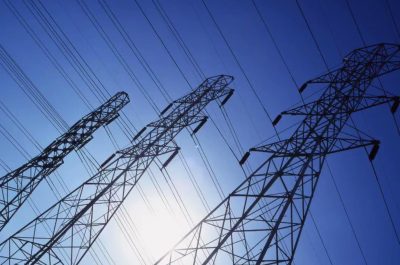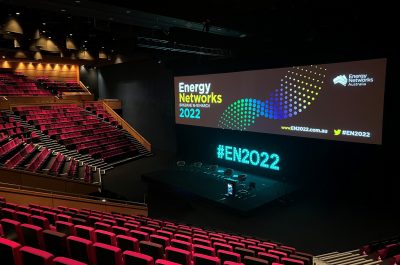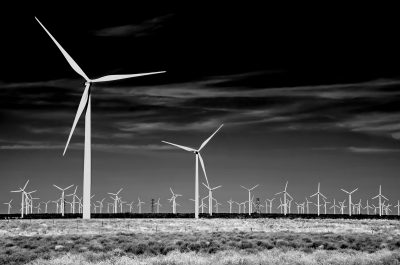Can a Renewable Gas Target give Australia a Hydrogen Headstart?
By Victoria Baikie, Economic Analyst, Energy Networks Australia
Last week’s budget announced a $2 billion Hydrogen Headstart program that aims to bridge the commercial gap for early-stage hydrogen production projects. A renewable gas target (RGT) could complement the Hydrogen Headstart program by showing clear intentions from governing bodies to support the development of both hydrogen supply and end-use markets.
The use of RGTs in Australia is relatively new. For help in developing local RGTs, it would be useful to look to other global examples of policies and strategies for developing renewable gas.
National Hydrogen Strategy
The Federal Government has developed an adaptive National Hydrogen Strategy to establish a strong foundation that support developments in hydrogen[i]. The emphasis of the strategy is on removing market barriers, setting clear regulatory frameworks, building efficient supply and demand, and accelerating the cost-competitiveness of Australian hydrogen.
Actions to deliver changes include financing clean hydrogen supply chains, policies that attract private investment, establishing long-term governance structures and market settings to foster industry growth and competition. While not specifically stated, this scope could include policies such as an RGT.
An update of the strategy is expected to start later this year.
Western Australia
Out west, the WA Government announced a renewable hydrogen target (RHT) in 2020[ii]. The RHT will help to develop hydrogen to be one per cent of the South West’s electricity generation.
The WA Government will establish a $10 million Renewable Hydrogen Fund to facilitate private sector investment. It will also play a critical role in addressing the appropriate standards and relevant regulatory system changes to allow for the development of renewable hydrogen.
There are four key focuses of the RHT:
- Exports

Figure 1: Renewable hydrogen export value chain (Western Australia Renewable Hydrogen Strategy, 2021)
- Remote Applications
- Hydrogen blending – Blending low concentrations of hydrogen into natural gas networks. By 2030, WA aims to have 10 per cent blending in pipelines.
- Transport
New South Wales
The NSW Hydrogen Strategy sets a path for development in green hydrogen to transform transport, industrial and energy sectors[iii]. The strategy aims to create 10,000 jobs and incentivise the first investors in the green hydrogen sector.
2030 stretch targets for green hydrogen include producing 110,000 tonnes a year for less than $2.80/kg, 10,000 hydrogen vehicles, 100 refuelling stations 10 per cent gas network blending, and 20 per cent hydrogen vehicles in the NSW Government heavy vehicles fleet.
The strategy is set out in three pillars:
- Enable industry development
- Lay industry frameworks
- Drive rapid scale
As a result of the strategy, the cost of hydrogen is forecast to decline by $5.80 per kg to reach the stretch target of $2.80/kg by the end of the decade.
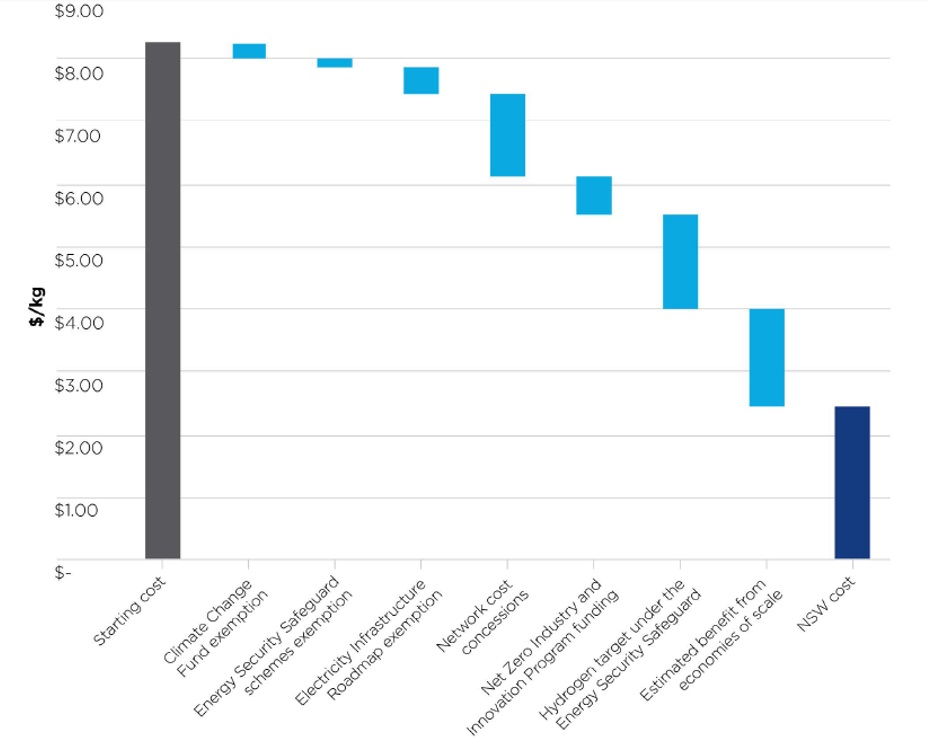
Figure 2: NSW Hydrogen Strategy impact on levelised cost of hydrogen (NSW Government, 2021)
European Union
The EU Hydrogen Strategy has established the European Clean Hydrogen Alliance to create a whole hydrogen eco-system[iv] to identify and build a clear pipeline of viable investment projects, including 22 GW of electrolyser projects. The strategy is set out in three timeline phases:
2020 – 2024: Reach at least 6 GW of renewable hydrogen electrolysers in the EU and produce up to 1 million tonnes of renewable hydrogen. The policy focus in this phase is on setting up the regulatory framework to allow for development.
2025 – 2030: Install at least 40 GW of renewable hydrogen electrolysers and produce up to 10 million tonnes of renewable hydrogen. Demand side policies will be needed to drive this section of the phase to include new functions, including steelmaking, trucks, rail and some maritime transport applications.
2030 – 2050: The final phase’s focus is on deploying hydrogen technologies at large-scale to reach hard to abate industries.
Germany
Germany’s National Hydrogen Strategy aims to make hydrogen a competitive and sustainable alternative option for fossil fuels[v]. It is forecast that about 90-110 TWh of hydrogen will be needed by 2030, requiring 5 GW of generation capacity. Other measures to promote renewable gas include:
- €8 billion to support construction of refuelling stations and fuel cell heating facilities and to fund various international green hydrogen projects
- Feed-in tariffs for electricity produced using biogas
- €1.4 billion in hydrogen and fuel-cell based heating R&D between 2016-2026
- EEG levy exemption for producers of green hydrogen, reducing the cost by €3.00/kg
- €55 million to establish a hydrogen-powered steel production plant
A biomass strategy is in development to ensure that the biomass used is sustainable and deployed in a way that aids the transition to greenhouse gas neutrality[vi].
Denmark
The Danish Government has a Green Gas Strategy that projects biogas will account for 70 per cent of gas consumption in 2030[vii]. To meet the demand there have been several policy interventions put in place, including three types of biogas subsidy schemes which provide premium tariffs for biogas used for electricity, heating and biomethane.
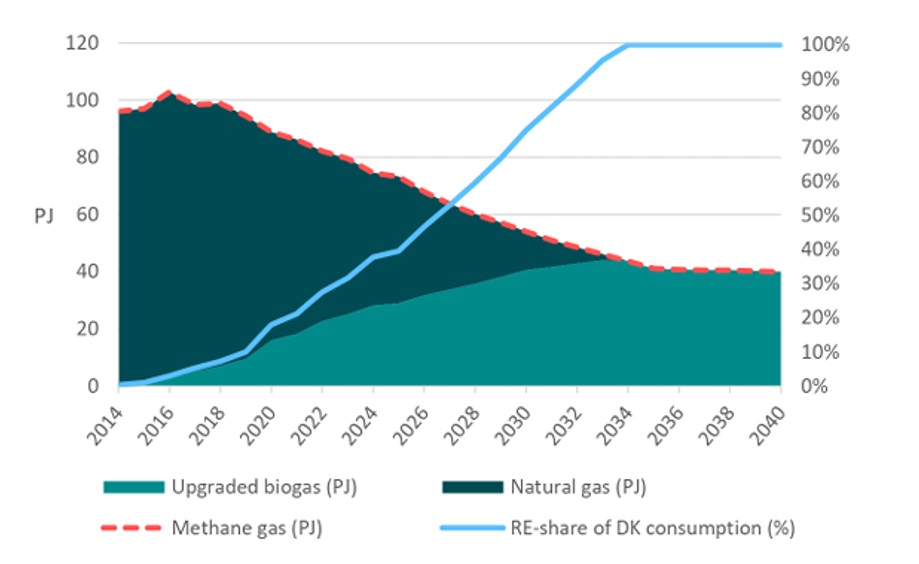
Figure 3: Consumption of methane gas by energy type and share of renewable energy in gas consumption (Danish Ministry of Climate, Energy and Utilities, 2021)
In 2021, €168 million was allocated towards a power-to-various products (PtX) subsidy scheme to support the development of green hydrogen technologies and production. The Danish Government has also implemented policy interventions to restrict the application of inorganic fertilisers in agriculture to promote use of biogas and tax exemptions for renewable electricity consumption, including biogas.
France
In France, there are several strategies outlined in recent years.
The 2020 National Energy and Climate Plan sets out a goal for biogas to account for 34 to 41 per cent of the renewable energy mix compared to 1990 by 2030.
Goals in the French Strategy for Energy and Climate include increasing the share of clean industrial hydrogen to 20 to 40 per cent, installing 10 to 100 MW of power-to-gas facilities, and having 20,000 to 50,000 hydrogen vehicles by 2028.
The French Government has also developed a National Strategy for the Development of Decarbonised and Renewable Hydrogen. The three priorities are decarbonising industry, developing use of decarbonised hydrogen for heavy-duty mobility, and support R&D. Between 2020-2023, the French Government has committed €3.4 billion to the strategy within the overall €7 billion between 2020 and 2030[viii].
Policy interventions to achieve goals include feed-in tariffs for biogas to electricity, to heat, and for biomethane injection into the natural gas grid.
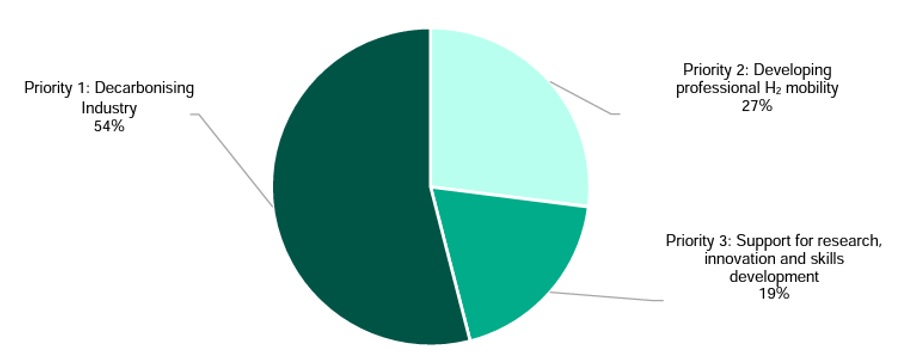
Figure 4: Breakdown of 2020-2023 funding (Government of France, 2020)
A renewable gas target needs to be part of the solution
Supportive policies are needed for Australia to realise its full potential from the emerging hydrogen industry.
Great progress is underway with support to research and demonstration projects, certification schemes, and the recently announced Hydrogen Headstart program to reduce the production costs of hydrogen.
Policies such as a renewable gas target are also needed to drive the update of renewable gas in Australia’s domestic economy.
xxx
[i] https://www.dcceew.gov.au/energy/publications/australias-national-hydrogen-strategy
[ii] https://www.wa.gov.au/government/document-collections/renewable-hydrogen-target-western-australia
[iii] https://www.energy.nsw.gov.au/sites/default/files/2022-08/2021_10_NSW_HydrogenStrategy.pdf
[iv] https://energy.ec.europa.eu/topics/energy-systems-integration/hydrogen/key-actions-eu-hydrogen-strategy_en
[v] https://www.bmwk.de/Redaktion/EN/Publikationen/Energie/the-national-hydrogen-strategy.pdf?__blob=publicationFile&v=6
[vi] https://www.bmwk.de/Redaktion/EN/Pressemitteilungen/2022/10/20221006-federal-ministries-present-core-principles-for-a-national-biomass-strategy.html
[vii] https://ens.dk/sites/ens.dk/files/Naturgas/groen_gasstrategi_en.pdf
[viii] https://www.bdi.fr/wp-content/uploads/2020/03/PressKitProvisionalDraft-National-strategy-for-the-development-of-decarbonised-and-renewable-hydrogen-in-France.pdf
